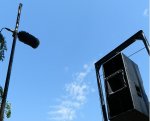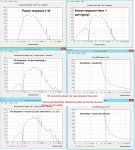Re: New DIY Mid High
Great thread Peter and Guys. I am considering building a pair of these as well. This is exactly the cabinet I have been looking for to shed almost 200lbs each from one of my ageing trap rigs I still use for certain applications. Sound quality, output, cost, and weight in that order have always been the determining factors for me. Now that I am less young and agile as I used to be, weight is now the main factor I have been looking at the last 2 years for a replacement cabinet. PM sent to Jeffrey for the group buy. Thanks for sharing Peter!
Great thread Peter and Guys. I am considering building a pair of these as well. This is exactly the cabinet I have been looking for to shed almost 200lbs each from one of my ageing trap rigs I still use for certain applications. Sound quality, output, cost, and weight in that order have always been the determining factors for me. Now that I am less young and agile as I used to be, weight is now the main factor I have been looking at the last 2 years for a replacement cabinet. PM sent to Jeffrey for the group buy. Thanks for sharing Peter!
Last edited:














